Varna is an ancient city with a centuries-old history. The town has witnessed a lot of vicissitudes. More than 100,000 years ago, the prehistoric human found his "home" along the quiet inlets and seaside lakes in the vicinity of today's Varna. Millennia later, an ancient European civilization originated and prospered on the fertile coasts of today's Varna Lake, this civilization created the biggest complex of lake dwellings in Southeastern Europe.
2,600 years ago, settlers from the Malaysian Greek town of Millet created the antique Odessos – today's city of Varna. Impressive temples were built. Throughout these 2,600 years the city was an intersection point of cultures, religions and myths, a junction of roads connecting countries and continents. Varna and its surroundings are studded with the signs of various epochs experienced by the city. Nowadays, an unique succession of cultures and traditions establishes the cultural layers of the contemporary city.

Also the spirit of the new century lives in Varna. Varna is not only a summer capital of Bulgaria but a real modern and light city with an European appearance. The city triples its "population" in the summer. The mixed multitude of guests occupies the streets, shops, coffee-bars and restaurants of the Sea capital. Varna is probably the most illuminated town of Bulgaria. It is bathed at night in varicoloured gleams that lend a mysterious and magnetic charm to the buildings, as if they are dressed in clothes of lights.
Varna Chalcolithic Necropolis (Varna Cemetery). The Oldest Gold in the World.
The most ancient golden ornaments, about 10 centuries older than the Egyptian, were discovered in Varna in the 1970s.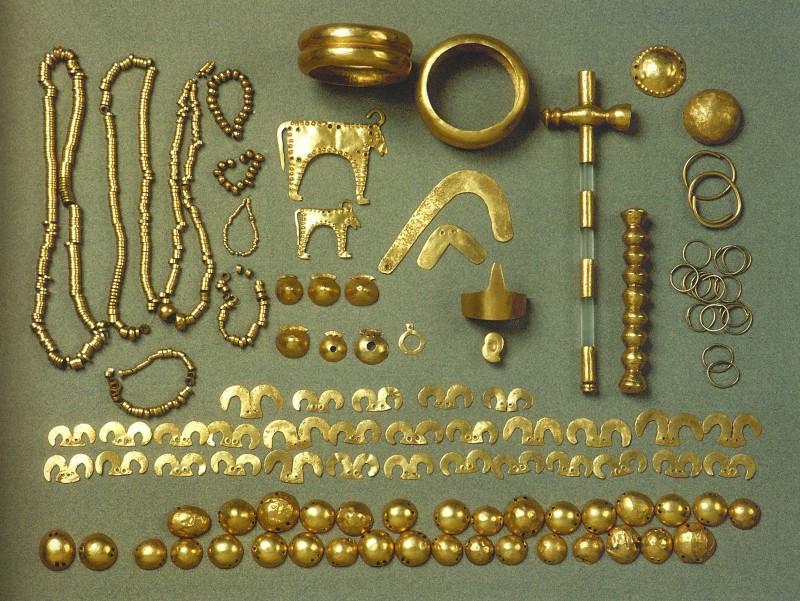 At the excavations of the unique Chalcolithic Necropolis near Varna (4,400 – 4,200 BC), among the burial gifts, along with the numerous stone, copper and clay articles, sensational finds were discovered, made of high-carat gold: stately insignia of power (sceptres, diadems and breastplates), exquisite articles of cult (golden and bone idols, masks with golden applications and golden amulets), plenty of filigreed gold and copper adornments (bracelets, necklaces, earrings and rings).
At the excavations of the unique Chalcolithic Necropolis near Varna (4,400 – 4,200 BC), among the burial gifts, along with the numerous stone, copper and clay articles, sensational finds were discovered, made of high-carat gold: stately insignia of power (sceptres, diadems and breastplates), exquisite articles of cult (golden and bone idols, masks with golden applications and golden amulets), plenty of filigreed gold and copper adornments (bracelets, necklaces, earrings and rings).
Varna Archaeological Museum is famous of having in its exposition the oldest gold on the planet. The gold found in the necropolis is 24 carats – but its colour was too yellow, pale, differs from the concepts on a contemporary golden adornment which has warmer or more reddish colour, quite often due to copper alloys. This is the reason why, in the beginning, the worker who has found the gold, thought this couldn't be gold. Old gold has always an unusual colour. "Nobody can imitate the colour of antique gold” said the already deceased antiques collector and trader Zhelyazko ”the Emperor”. The only similar necropolis in our country, dating from the same epoch, is located in Durankulak. About 1,000 graves and about 50 grams golden adornments have been found there.
One of the mysteries connected with the Varna Necropolis still cannot be fully cleared up by the scientists, and namely the so called symbolic (empty) graves that do not contain skeletons, but burial objects. There are several hypotheses for these graves. "In Greek culture, there was a custom to prepare an empty grave for somebody who had fallen dead far away and bringing his body had been impossible. But it is not clear why all symbolic graves in the Varna Necropolis are so rich and full of so much gold." The other hypothesis is connected with rituals in ancient Egypt. Graves for Gods were being made there. Osiris and Isis were being buried every autumn and they were rising from the dead every spring. It is presumed that similar customs can have existed in our country too, although long before Egyptians.
The place where the oldest gold has been found cannot be exhibited to the world today but the treasure can be seen in the halls of Varna Archaeological Museum and is one of the big museum attractions for the tourists.
"Pobiti Kamani" (The Fossil Forest)
The natural phenomenon "Pobiti Kamani" represents enveloped formations of Eocene sands among which upright stone concretions (so called columns) are located, resembling a stone forest. 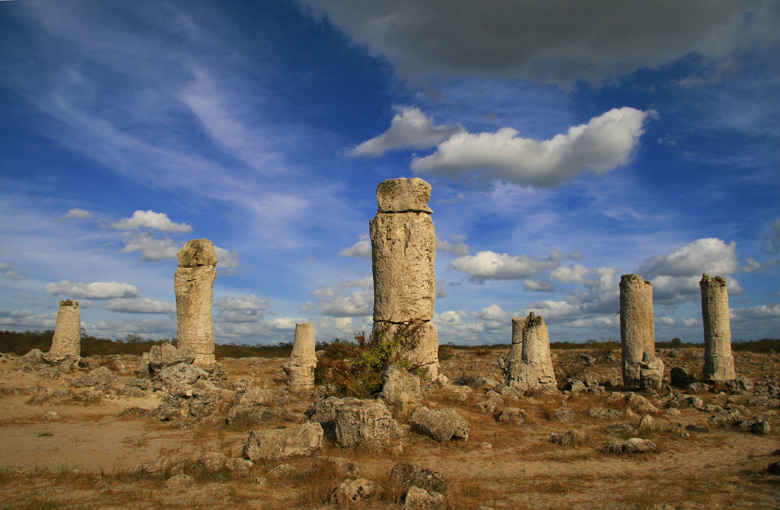 Most famous is the Center – South Group. It is situated 18 km to the West of Varna and contains about 300 big and small columns, up to 6 meters high, rising mainly to the South of Varna – Devnya Highway. The most impressive groups of "Pobiti Kamani" are part of the first protected territories in Bulgaria still in 1938. 14 groups in total, with an area of 253.3 hectares were protected later, and since 2002 the natural sightseeing area was recognized as protected site.
Most famous is the Center – South Group. It is situated 18 km to the West of Varna and contains about 300 big and small columns, up to 6 meters high, rising mainly to the South of Varna – Devnya Highway. The most impressive groups of "Pobiti Kamani" are part of the first protected territories in Bulgaria still in 1938. 14 groups in total, with an area of 253.3 hectares were protected later, and since 2002 the natural sightseeing area was recognized as protected site.
The legend about "Pobiti Kamani" ...
Long time ago titans, who were under the rule of the Sea God, were guarding the sea that was reaching the lands of the Fossil Forest. Not in a long distance, there was a small village where a young man lived. One day God disclosed his name to him and had him vow to keep that great secret forever. Therefore, God endowed him with immortality. However, God warned the young man that if he discloses his name to anybody, he would become mortal again. One early morning, while the young man was walking along the sea-shore, he saw an incredibly beautiful local woman. Both fell in love at the first sight. When the young man came back to the village, he asked the locals about her and they told him that she was destined to become wife of the sea titans' leader. The brave man went to the titans and promised them that if they give him the girl he would fulfill one of their wishes. They wished to know God's name. The young man decided to sacrifice his immortality in the name of love and was ready to reveal the secret to them. On the next morning, before sunrise, he started arranging the titans along the coast line, then told them: “I just wrote the name of God with your bodies.”
God was watching dawn what happened and remained astonished by this act in the name of love. Then he decided to punish the titans. When the first sun rays lit up the shore, the sea guardians immediately turned into stone columns. Soon afterwards the young man started walking on the shore, looking for his beloved. In the moment when they met and hugged each other, a spring of miracle-working medicinal water gushed out under their feet.
The Roman Baths (Thermae)
The Roman Thermae of Odessos are the third biggest in Europe and the biggest on the Balkans. 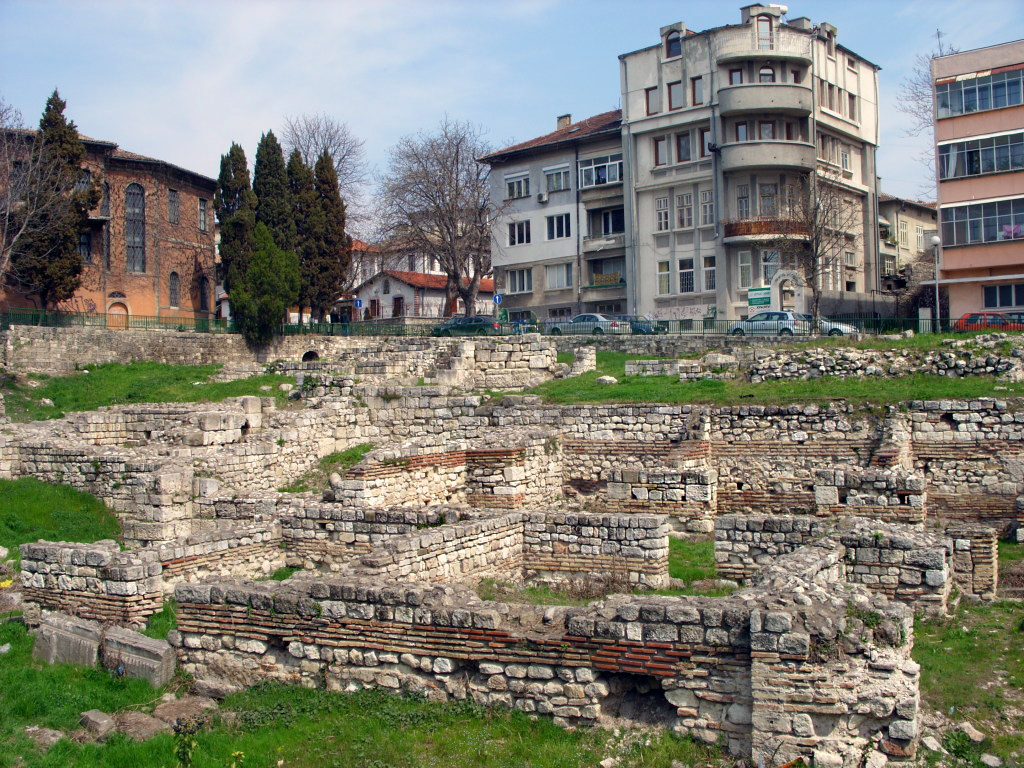 Covering an area of about 7,000 square meters, they are built on the basis of a specific technology, alternating a stone wall and five – six rows of dense clay bricks. The internal stairs and the door vaults are formed by enormous stone blocks, and fragments of magnificent mosaics can still be seen on some places. They, together with the numerous decorative marble fragments, columns and chapels, speak about the magnificent decoration of the building in the past. The thermae used to function almost one century, till the end of the 3rd century and besides as a place of hygiene, they used to play the role of a peculiar club for business meetings and sport activities. Passing through spacious halls creating a natural barrier for the cold air, the visitors of the baths used to enter a big hall called palestra. Highly attractive even today is the heating system connected with the double floor and the special cavities leading the warm air to the roof structure of the Thermae.
Covering an area of about 7,000 square meters, they are built on the basis of a specific technology, alternating a stone wall and five – six rows of dense clay bricks. The internal stairs and the door vaults are formed by enormous stone blocks, and fragments of magnificent mosaics can still be seen on some places. They, together with the numerous decorative marble fragments, columns and chapels, speak about the magnificent decoration of the building in the past. The thermae used to function almost one century, till the end of the 3rd century and besides as a place of hygiene, they used to play the role of a peculiar club for business meetings and sport activities. Passing through spacious halls creating a natural barrier for the cold air, the visitors of the baths used to enter a big hall called palestra. Highly attractive even today is the heating system connected with the double floor and the special cavities leading the warm air to the roof structure of the Thermae.
Aladzha Monastery
Aladzha Monastery is the most famous medieval cave monastery complex in the Bulgarian Black Sea region, inhabited by hermit monks in 13 – 14th century. 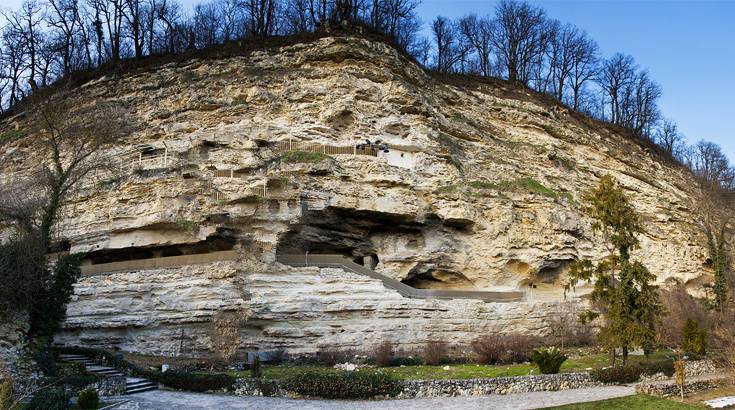 The monastery caves were hewn on two levels into an almost 40 meters high limestone rock. The monastery church, the monastic cells, the dining premise and the kitchen are situated on the first level, as well as a small cemetery church, the crypt (bone-vault) and the economic premises. The second level represents a natural rock bay in whose East end the monastery chapel is built.
The monastery caves were hewn on two levels into an almost 40 meters high limestone rock. The monastery church, the monastic cells, the dining premise and the kitchen are situated on the first level, as well as a small cemetery church, the crypt (bone-vault) and the economic premises. The second level represents a natural rock bay in whose East end the monastery chapel is built.
A group of caves known by the name of Catacombs is situated 600 – 700 m to the West of the monastery. The finds there – ceramics, coins, graphites, etc. – testify that the Catacombs used to be dwelled in the Early Christian Epoch. The beginning of systematic researches was set in the end of 19th century by the founders of the Bulgarian archaeology, and namely the brothers Karel and Hermann Škorpil. Since 1906, Aladzha Monastery functions as a museum and tourist site. It is declared architectural monument of culture of national significance.
Varna Archaeological Museum
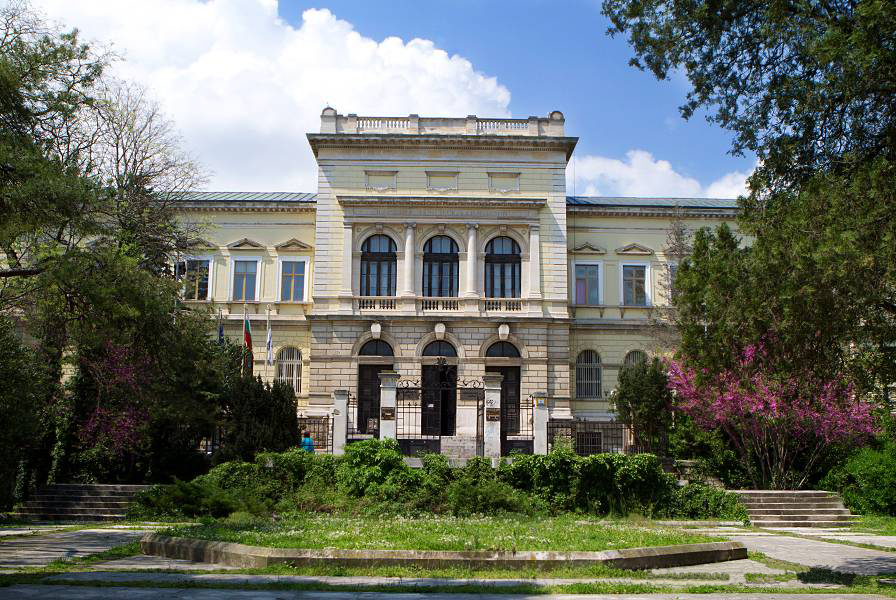 The Varna Archaeological Museum is one of the largest museums in the country. It stores some of the most remarkable and precious monuments of the world culture. The objects of the exposition and the museum funds are base for work of a number of Bulgarian and foreign specialists. The exhibits as well as the museum objects of Aladzha Monastery and the Roman Baths are some of the most visited by the thousands of tourists coming to the Bulgarian Black Sea coast.
The Varna Archaeological Museum is one of the largest museums in the country. It stores some of the most remarkable and precious monuments of the world culture. The objects of the exposition and the museum funds are base for work of a number of Bulgarian and foreign specialists. The exhibits as well as the museum objects of Aladzha Monastery and the Roman Baths are some of the most visited by the thousands of tourists coming to the Bulgarian Black Sea coast.
Varna Archaeological Museum shows to its guests a small part of the brilliance of the Bulgarian Middle Ages. Works of virtuous masters – goldsmiths, icon-painters and ceramists, can be seen in the renewed exposition. The exhibits refer to the Christian period of the First and to the Second Bulgarian State (the last decades of 9 – 10th and the last decades of 12 – 14th centuries).
The Varna Eneolithic Necropolis, the most significant monument of that time, is presented in three separate exposition halls of the Varna Archaeological Museum. Accidentally discovered upon excavation works in the Western industrial zone of Varna in 1972, it changed into a sensational scientific discovery whose significance goes beyond the borders of the Bulgarian prehistory. The special place of Varna Necropolis is due not only to the established various funeral practices but also to the wealth and diversity of findings. The found gold artifacts only are more than 3,000 with a total weight of more than 6 kg, and their diversity is considerable, exceeding 38 different types of articles. The ceramics – over 650 clay made utensils, is very often found tomb inventory. Two utensils have a special place among the ceramics as their surface is decorated with golden paint.
The findings in respect of type, position and quantity; the types of graves in the Varna Necropolis and the large complex of lake dwellings as well as other facts give us reason to believe that the First European civilization was born in the region of Varna Lakes in the late Copper-Stone (Chalcolithic) Epoch. The quantity of gold found in Varna Necropolis exceeds as number and weight all prehistorical golden findings found in the same epoch in the entire rest of the world, taken together.
National Revival Museum
The exposition of the National Revival Museum in Varna is arranged in an ancient building constructed in the end of 19th century.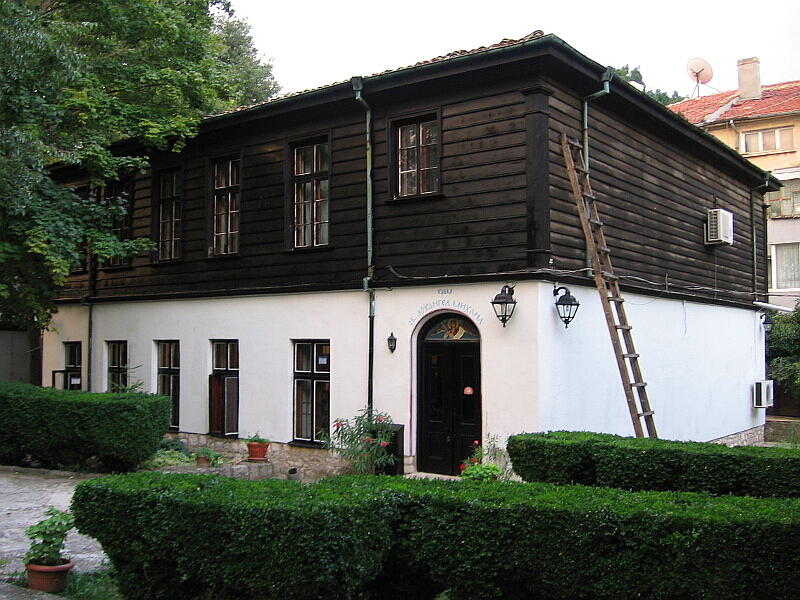
Used for various purposes in the past (including for a girls' school after the Liberation), today it houses the museum. The exposition relates important moments of the history of Varna in the Revival period – the economic development of the city, the establishment of the city hall, the school and the national church movement. The struggles leading to the Liberation are also exhibited, in particular the participation of the Varna region in the haidouk movement, the revolutionary events, the April rebellion and the Liberation.
One of the museum halls reproduces a class room of a school from the Revival period. Interesting are the desks with sand on which children learnt to write the letters, the black writing boards and the mutual teaching tables in reading and mathematics. Curiosity awake also the orders for commendations and the black plates for reproach of pupils. Preserved is also the original black board with the letters of the Bulgarian alphabet given as a present to the school in 1861.
Museum of New History of Varna
The Museum of New History of Varna presents the development of the city as a first-rate port, trade, industrial, cultural and educational, national and international resort and curative center in the period 1878 – 1939. 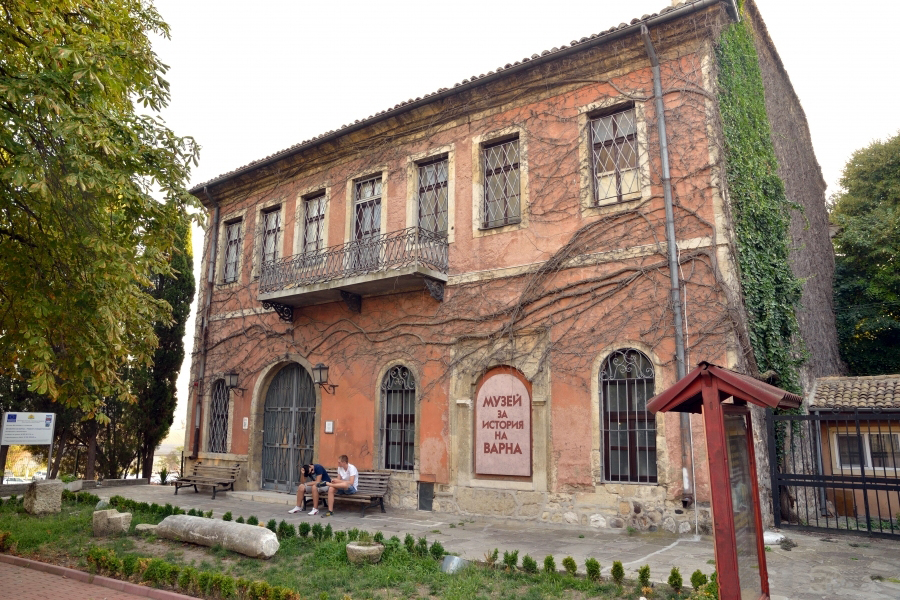 The museum avails of more than 16,000 exhibits. The more interesting of them in the sphere of industry are an original printing press from the end of the 19th century, imported from Vienna, printing letters, newspapers and books issued in Varna, the first in the city loom from a cotton weaving factory imported in 1902 from England. Among the exhibits are the only one preserved in the country docker's packsaddle for carrying loads on the port, original photos representing the construction stages of the new port (1895 – 1906), actions and prospects referring to the creation of the Bulgarian Steamship Company in 1892. Interesting exhibits are the silver hoe and spade used by Prince Alexander of Battenberg to make the first sod of the Dormition of the Mother of God Cathedral.
The museum avails of more than 16,000 exhibits. The more interesting of them in the sphere of industry are an original printing press from the end of the 19th century, imported from Vienna, printing letters, newspapers and books issued in Varna, the first in the city loom from a cotton weaving factory imported in 1902 from England. Among the exhibits are the only one preserved in the country docker's packsaddle for carrying loads on the port, original photos representing the construction stages of the new port (1895 – 1906), actions and prospects referring to the creation of the Bulgarian Steamship Company in 1892. Interesting exhibits are the silver hoe and spade used by Prince Alexander of Battenberg to make the first sod of the Dormition of the Mother of God Cathedral.
The spirit of that time is reproduced by a furnished hotel room and eating-house where bottles of original liquor dating the 20's of 20th century are kept.
Ethnographic Museum
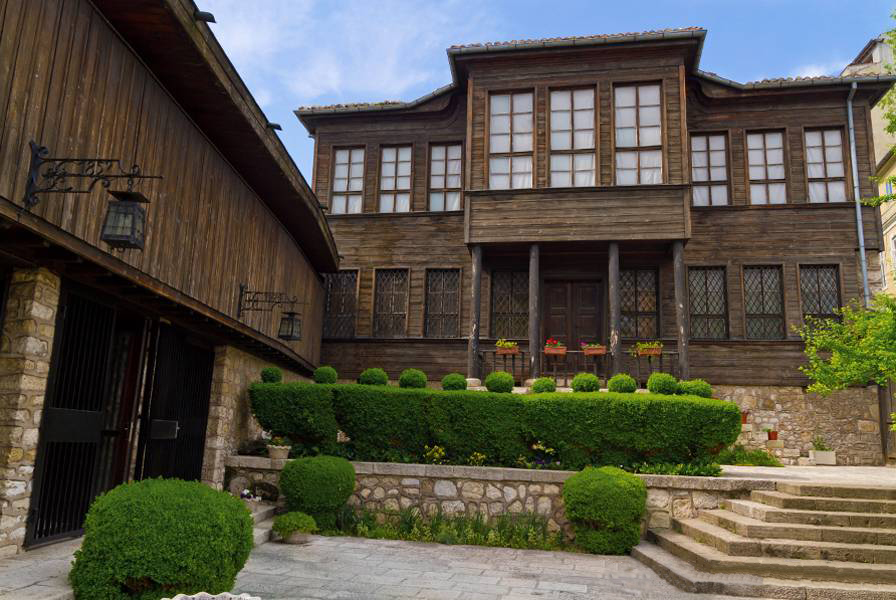 The Ethnographic Museum is situated in a house from the Revival period, built around 1860. The museum presents a big variety of exhibits speaking of the culture and style of life of the population in Varna region from the second half of the 19th and the beginning of the 20th century. The basic occupations and industrial arts are exhibited on the first floor of the museum. One of the most interesting exhibits is the small old plough called "dyolmedzha" used for ploughing the earth till the beginning of the 20th century. The exposition on the second floor presents the traditional national costumes which give an idea of the Varna region's demographic outlook. Traditional ritual clothes for the Christmas, Petlyovden (Day of the Cock) and Lazarovden (St. Lazarus' Day) are exhibited too.
The Ethnographic Museum is situated in a house from the Revival period, built around 1860. The museum presents a big variety of exhibits speaking of the culture and style of life of the population in Varna region from the second half of the 19th and the beginning of the 20th century. The basic occupations and industrial arts are exhibited on the first floor of the museum. One of the most interesting exhibits is the small old plough called "dyolmedzha" used for ploughing the earth till the beginning of the 20th century. The exposition on the second floor presents the traditional national costumes which give an idea of the Varna region's demographic outlook. Traditional ritual clothes for the Christmas, Petlyovden (Day of the Cock) and Lazarovden (St. Lazarus' Day) are exhibited too.
The Dormition of the Mother of God Cathedral of Varna
Located in the real centre of the city, the Dormition of the Mother of God Cathedral is one of the symbols of Varna,  a devotional temple for the citizens of Varna and a sightseeing site for the tourists at the same time.
a devotional temple for the citizens of Varna and a sightseeing site for the tourists at the same time.
The temple was erected in the period between 1884 and 1886 according to a design of the Russian architect Maas by the builder Master Gencho Kanchev from Trjavna. Mainly donations were expected to be collected for financing the construction. A lottery of 150,000 2-lev tickets was run and sold out in the country and abroad. The total amount needed for the temple construction was 324,542.88 BGN. The temple is the first one in Bulgaria, erected in memory of the Russian and other soldiers and Bulgarian volunteers who died for the faith and Liberation of Bulgaria. Its location was chosen personally by Prince Alexander of Battenberg in 1880. By the end of 19th, it was the biggest church building in Bulgaria, and today it is the second biggest one. The Mother of God is a patroness of the city and the temple feast, August 15th, was declared to be the day of Varna too.
The Stoyan Bachvarov Dramatic Theatre
 The building of the Theatre of Varna was built by the project of architect Nikola Lazarov who participated in the construction of the National Theatre of Sofia. The foundation stone was laid on 26 March 1912. The mayor Ivan Tserov assessed the high cultural significance of the theatre and the vital necessity of a theatre in Varna. The entire population of the city took part in the noble theatre building initiative. After the enthusiastic beginning and a slack period of several years after the wars, the construction works were restored again in 1927. The construction was completed by the city architect Zhelyazko Bogdanov. The building was inaugurated on 5 June 1932.
The building of the Theatre of Varna was built by the project of architect Nikola Lazarov who participated in the construction of the National Theatre of Sofia. The foundation stone was laid on 26 March 1912. The mayor Ivan Tserov assessed the high cultural significance of the theatre and the vital necessity of a theatre in Varna. The entire population of the city took part in the noble theatre building initiative. After the enthusiastic beginning and a slack period of several years after the wars, the construction works were restored again in 1927. The construction was completed by the city architect Zhelyazko Bogdanov. The building was inaugurated on 5 June 1932.
The Port of Varna
Port of Varna is located on the west coast of Varna Bay.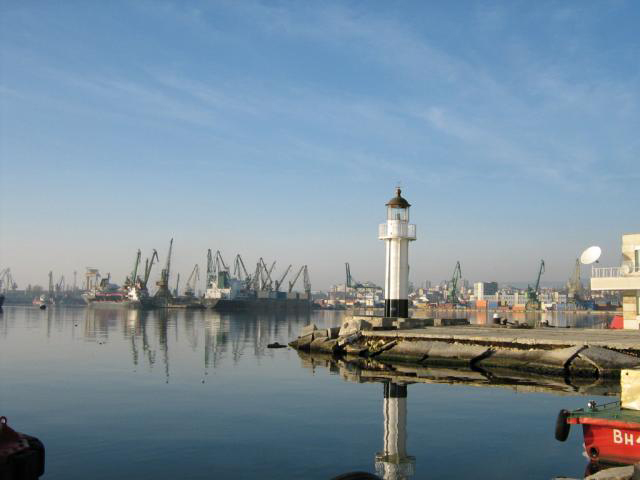 The port avails of two terminals, and namely East and West, that are situated within a distance of about 30 km away from each other. Whereas Port East is located on the Black Sea, Port West occupies the most western part of Lake Beloslav. The design and construction period of the Port moves from the 19th to 20th century. The approaches to the channel for Port of Varna are without limitations. Its depth is about 12.5 m. The pier is an important element of the Port. The pier's two parts are 330 m and 890 m long. In 1974 Varna got a second port: Port of Varna West. Its loading capacity today is 300 t/h, and this year's throughput of cargo almost reaches 10 mln. t. Besides, the new Marine Station with 500 m. quay walls was built in 1968. An often attraction here are the arrived luxurious cruise ships.
The port avails of two terminals, and namely East and West, that are situated within a distance of about 30 km away from each other. Whereas Port East is located on the Black Sea, Port West occupies the most western part of Lake Beloslav. The design and construction period of the Port moves from the 19th to 20th century. The approaches to the channel for Port of Varna are without limitations. Its depth is about 12.5 m. The pier is an important element of the Port. The pier's two parts are 330 m and 890 m long. In 1974 Varna got a second port: Port of Varna West. Its loading capacity today is 300 t/h, and this year's throughput of cargo almost reaches 10 mln. t. Besides, the new Marine Station with 500 m. quay walls was built in 1968. An often attraction here are the arrived luxurious cruise ships.
The Port is protected from the East by a pier on whose internal part the Marine Station is situated. In its present appearance it was built in 1968, half a kilometer long quay walls were added later.
The Sea Garden in the city of Varna
The Sea Garden was arranged in 1881 on suggestion of the then mayor Mihail Koloni. 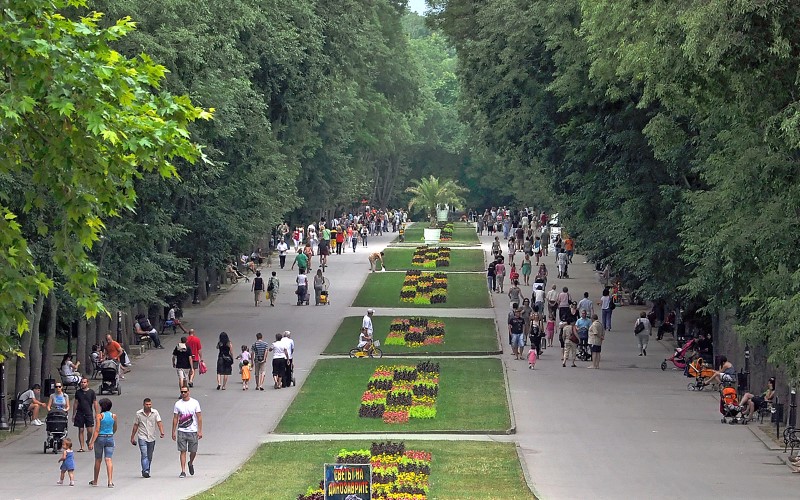 The French park engineer Martine prepared the plan of a large seaside park, realized by Anton Novák in 1895 - 1902. The Garden avails of an open-air summer theatre, aquarium, dolphinarium, zoo and astronomical observatory with a planetarium. The beautiful central entrance to the Sea Garden was built in 1983. The Sea Garden is one of the symbols of the city and a declared national monument of landscape architecture. Among the sightseeing sites of Varna that are situated on the territory of the Sea Garden is the Naval Museum which is included in the list of the 100 national tourist sites. The Varna Zoo was inaugurated in 1961. Its first inhabitant was the bear Maxim who was given as a gift by the seamen of Georgi Dimitrov Ship. In 1968, an astronomical observatory was built. You can see a swan-shaped sundial installed in front of the Sea Garden main entrance.
The French park engineer Martine prepared the plan of a large seaside park, realized by Anton Novák in 1895 - 1902. The Garden avails of an open-air summer theatre, aquarium, dolphinarium, zoo and astronomical observatory with a planetarium. The beautiful central entrance to the Sea Garden was built in 1983. The Sea Garden is one of the symbols of the city and a declared national monument of landscape architecture. Among the sightseeing sites of Varna that are situated on the territory of the Sea Garden is the Naval Museum which is included in the list of the 100 national tourist sites. The Varna Zoo was inaugurated in 1961. Its first inhabitant was the bear Maxim who was given as a gift by the seamen of Georgi Dimitrov Ship. In 1968, an astronomical observatory was built. You can see a swan-shaped sundial installed in front of the Sea Garden main entrance.
The Lighthouse of Galata Cape
Galata is a rocky headland in Bulgaria, situated in the northeast corner of the Avren Plateau, about 4 km away from Varna Lake. 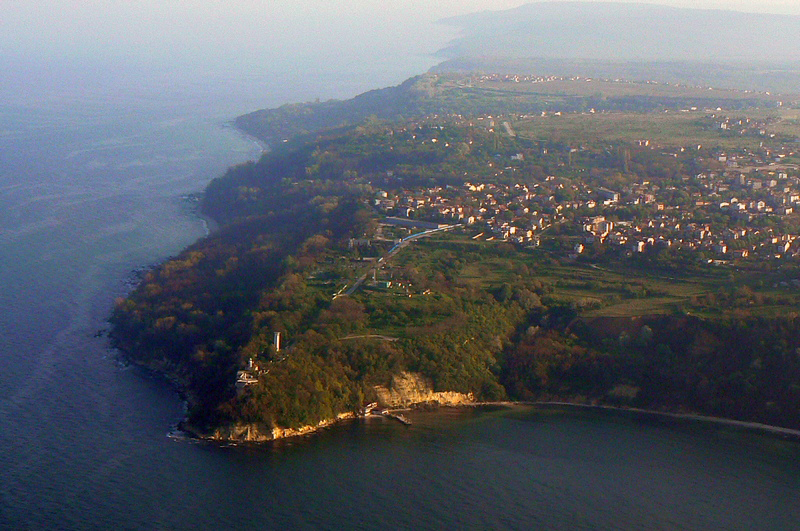 Galata Cape is one of the symbols of Varna. Galata urban quarter and its beaches Fichosa and Pasha Dere are located in the neighbourhood. Beautiful nature, clean, at some places stony beach with fishing and mussel collection as well as camping opportunities, are preserved in the vicinity of the Cape. It is the endpoint of Varna Bay.
Galata Cape is one of the symbols of Varna. Galata urban quarter and its beaches Fichosa and Pasha Dere are located in the neighbourhood. Beautiful nature, clean, at some places stony beach with fishing and mussel collection as well as camping opportunities, are preserved in the vicinity of the Cape. It is the endpoint of Varna Bay.
The Lighthouse of Galata Cape is one of the main navigation facilities on the Bulgarian Black Sea coast. It started functioning on 15 August 1863. A lot of ships and fishing boats have found the life-saving route to the port thanks to it. The history of the Lighthouse, its century-old chronicle has registered many cases when its lights have returned the hope of shipwreck survivors desperately fighting the angry sea. Many legends tell of sea battles that have happened in vicinity to this coast and of the rescue lights coming from the Lighthouse on the high cape.
According to one of the legends, the sea nymph Galatea was beloved by the one-eyed Cyclops Polyphemus but she loved the handsome shepherd Acis. Polyphemus was seized with cruel jealousy and therefore he broke a huge stone and hurled it at Acis. But the latter turned into a clear stream and started to flow to the sea, to join his beloved Galatea.
The Asparuhov Bridge
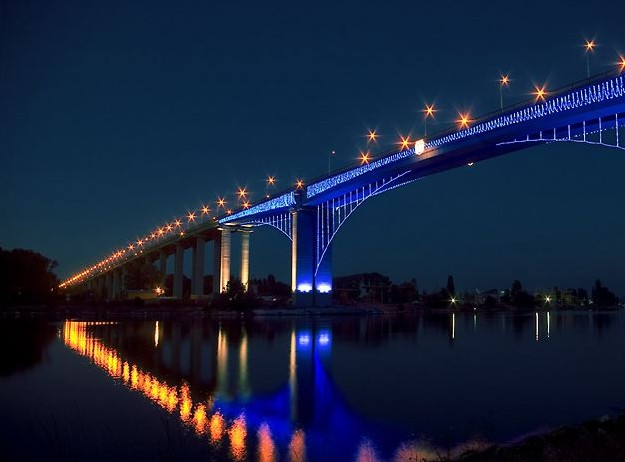 Thanks to its impressive sizes, Asparuhov Bridge has turned into one of the symbols of Varna. It was inaugurated 30 years ago. The Bridge is 2,500 m in length, 50 m in height and connects the two coasts over the canals between the Black Sea and Lake Varna. The installation is part of Cherno More motorway and is crossed by more than 10,000 vehicles every 24 hours.
Thanks to its impressive sizes, Asparuhov Bridge has turned into one of the symbols of Varna. It was inaugurated 30 years ago. The Bridge is 2,500 m in length, 50 m in height and connects the two coasts over the canals between the Black Sea and Lake Varna. The installation is part of Cherno More motorway and is crossed by more than 10,000 vehicles every 24 hours.